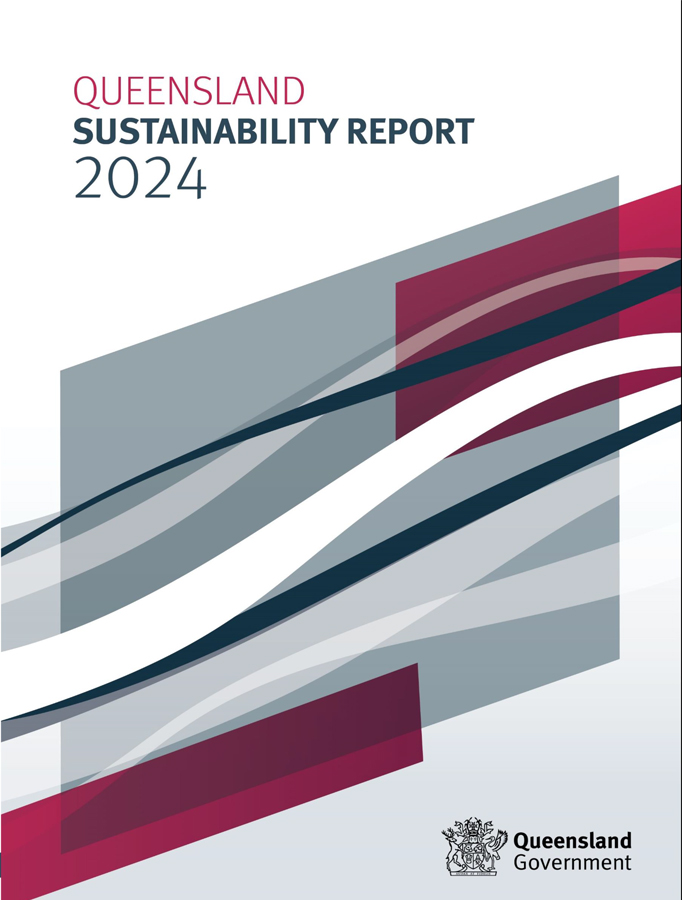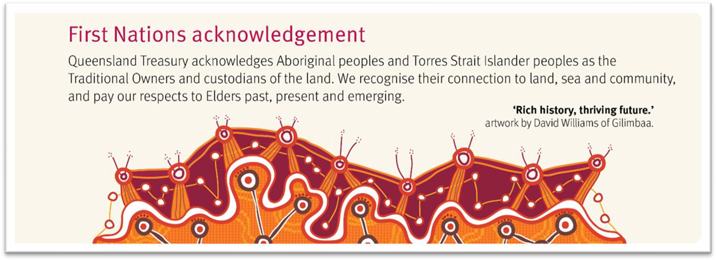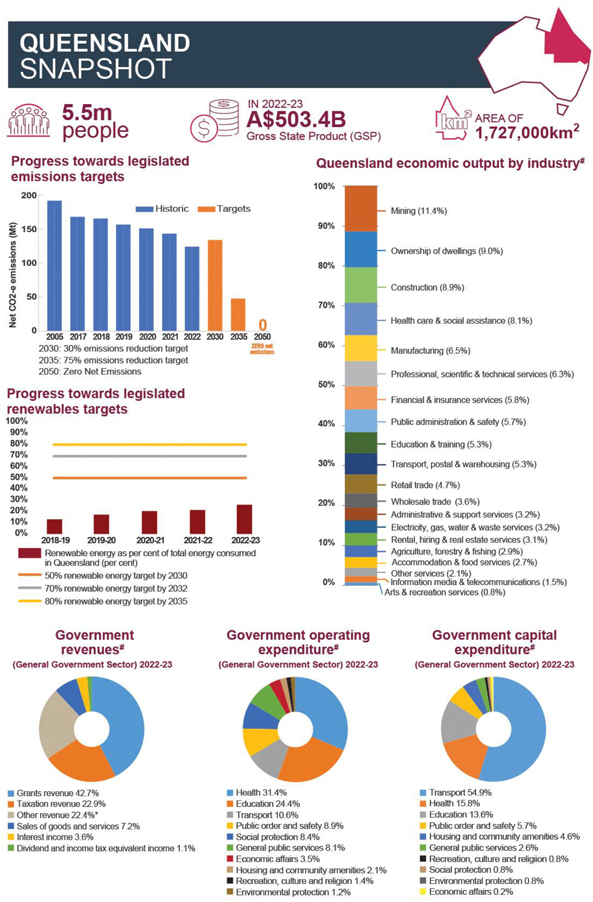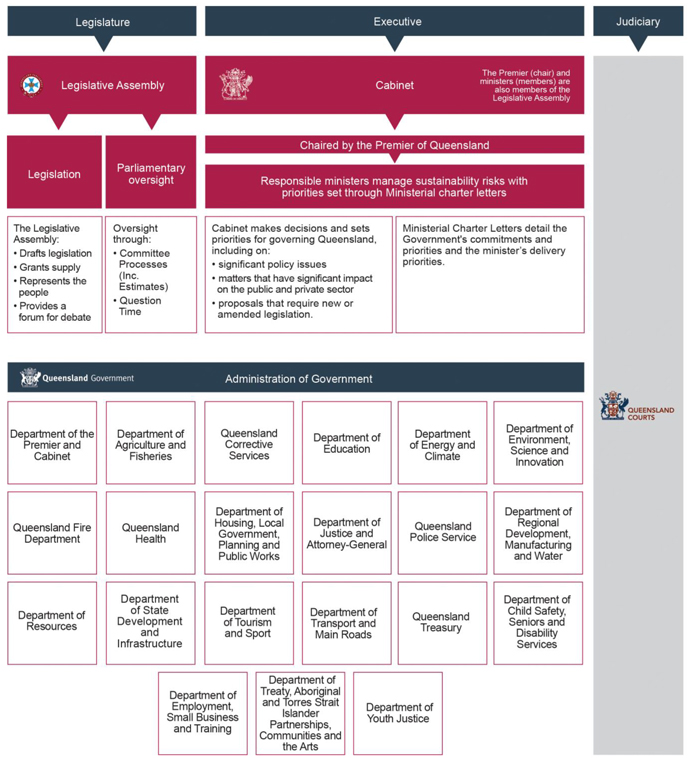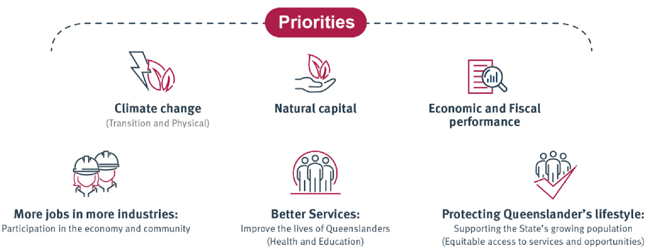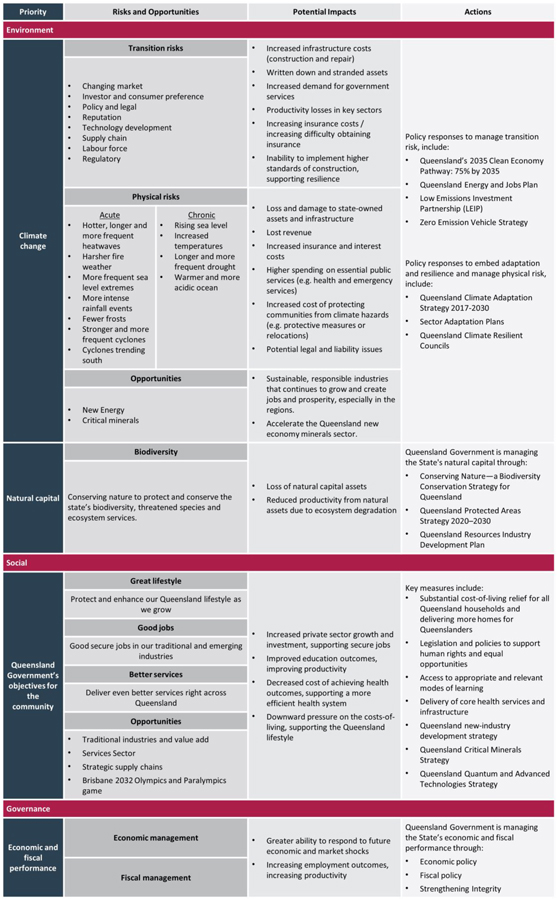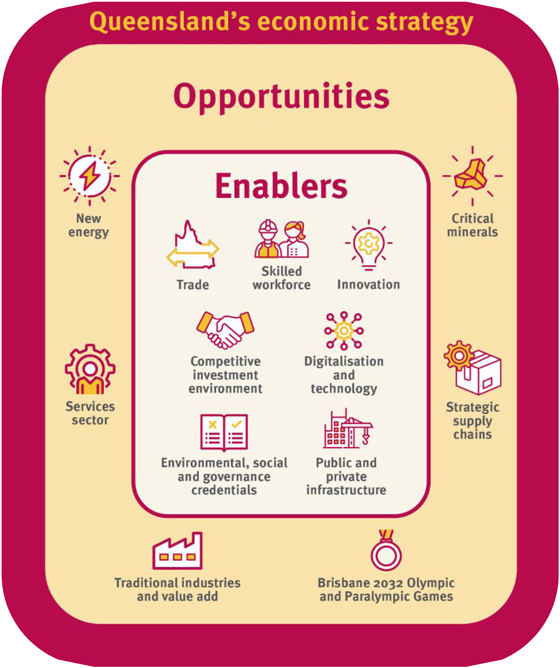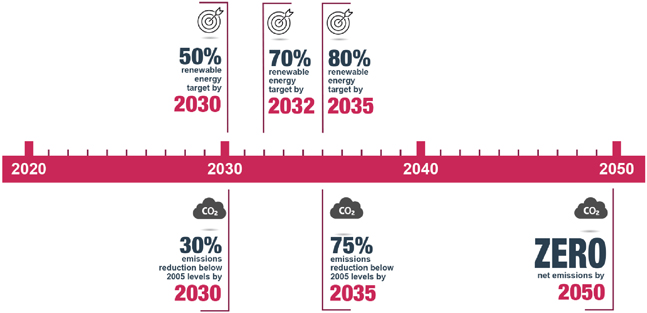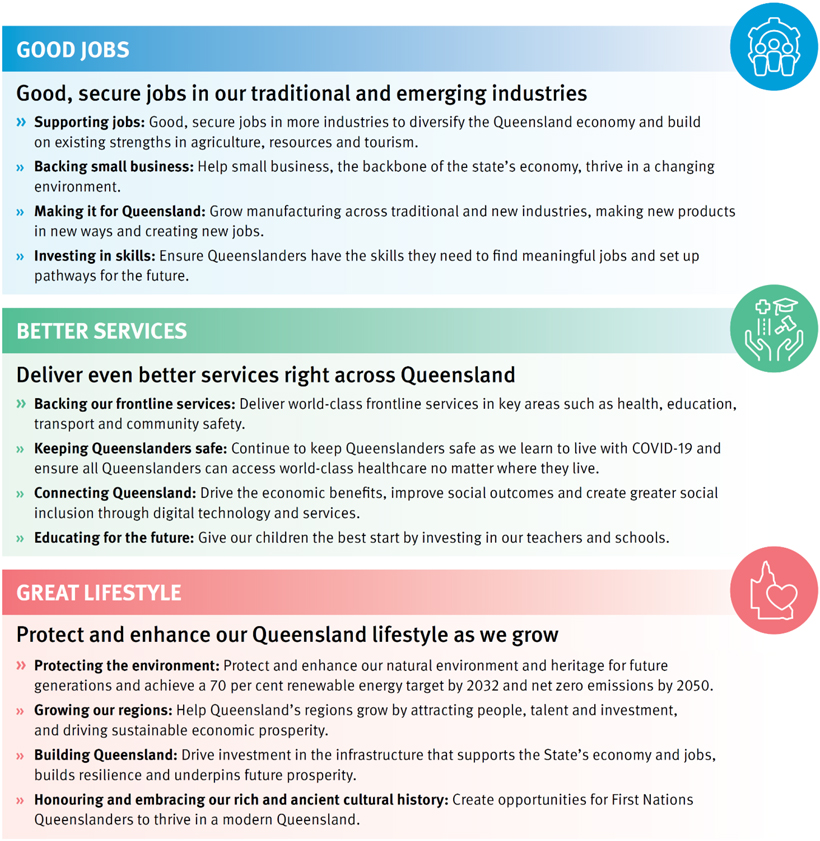Natural capital
Natural capital is the stock of the Earth’s renewable and non-renewable resources, including trees, soils, air, water, minerals, and all living things that provide ecosystem services. The State of Queensland has a range of natural capital assets, comprising of metal and mineral resources, agricultural land, clean and secure water supplies, rich biodiversity and globally recognised protected areas, including World Heritage Areas such as K’gari (Fraser Island), the Wet Tropics of Queensland, the Gondwana Rainforests of Australia, the Australian Fossil Mammal Sites – Riversleigh section and the Great Barrier Reef.
The Queensland Government has responsibility for the effective management of the state’s natural resources. In doing so, it seeks to balance resource utilisation between industry, community use and safeguarding the integrity of the natural environment for future generations.
The Queensland Government manages nature related risks at both a whole-of-state level and at an organisational level by establishing structures and regulating interactions of stakeholders with ecosystems. This considers key elements including water management, biosecurity, aquaculture, forestry management and environmental protection.270
Natural capital - Management
The management of natural capital is undertaken by Cabinet with the support of key departments led by responsible Ministers as set out in Figure 7: Queensland’s environmental management.
The Queensland Treasurer and the Minister for Environment and the Great Barrier Reef and Minister for Science and Innovation jointly manage the Queensland Government’s Land Restoration Fund (LRF). The LRF supports landholders, farmers and First Nations peoples to generate new, regular income streams through carbon farming projects whilst providing valuable co-benefits such as healthier waterways, increased habitat for threatened species, and more resilient landscapes.
Natural capital - Strategy
Queensland’s natural assets, including biodiversity and the health of ecosystems, can affect the productivity and fertility of land, rivers and oceans. Adverse changes to ecosystem services may impact agriculture, tourism and many other industries. The Queensland Government is aware of systemic risks embedded within natural capital that may have cascading or amplifying impacts through supply chains and resource availability, business operations and regulatory environments.271
Protecting Queensland’s natural environment in a way that complements economic development is a priority. The state actively leverages its natural capital assets to develop new industries, such as the liquefied natural gas (LNG) export supply chain, critical minerals and bio-futures.
The government’s approach to natural capital management is focused on protecting and conserving the state’s biodiversity values, addressing the decline in threatened species, and connecting people and nature in economic, social and environmental contexts.
The Queensland Government manages its assets and ecosystems, through the implementation of policies to mitigate risks to natural capital and ecosystem loss. These policies focus on creating positive outcomes by reducing human impacts on nature and/or contributing to its restoration.272
The Queensland Government manages Queensland’s natural capital based on the key elements as set out in Figure 12.
